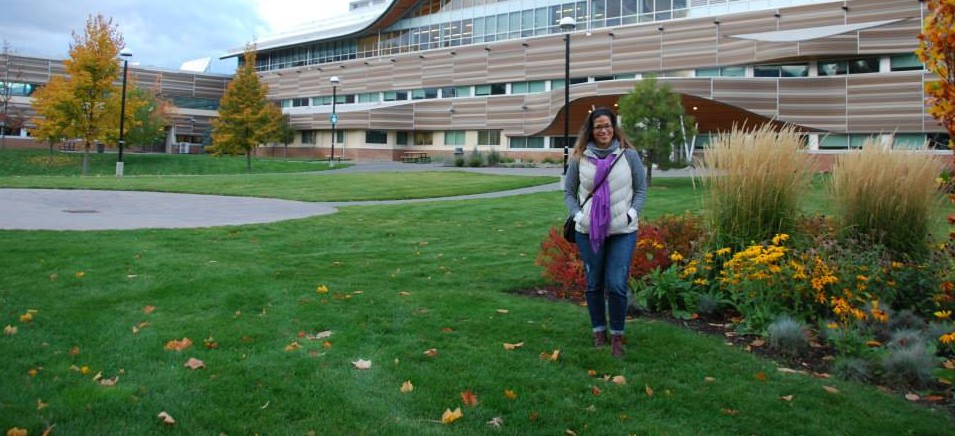L21C has been an unconventional course in many ways, but the students (partners) did do one pretty traditional assignment: a good old legal memo. There were a couple of twists, though: the memos were written collaboratively by the student groups, and they were also set up as work product for a client on which all the time had to be tracked and billed using Clio.
All the L21C partners reviewed and commented on one another’s memos, and finally voted on which memo was the best on each of the two assigned topics.
Here is one of the winners: a memo outlining how BC’s new Civil Resolution Tribunal works, from the point of view of a poverty law clinic looking at how this new initiative can enhance access to justice. For the purpose of this assignment, the (fictional) clinic was the firm’s client, seeking advice on its options for setting up a new consumer law clinic using the Civil Resolution Tribunal – an artificial set-up, but not completely outlandish, as it is not hard to imagine a law firm helping out a clinic on a pro bono basis with this kind of analysis. As we learned from guest speaker Lawrence Alexander, consumer problems are among the most common legal difficulties people need help with. And the CRT is supposed to make it easier, faster and cheaper to deal with these small-claims disputes, compared with going to court.
The memo follows. (Please note that this isn’t legal advice!)
November 4, 2015
To: Street Legal Services
Re: Creation of a New Consumer Protection Clinic
The purpose of this memo is to advise Street Legal on the creation of a new consumer claims clinic through the Civil Resolution Tribunal. Following a summary this memo will look at (a) key relevant legal provisions, (b) a proposed structure and (c) ways to maximize access to justice.
Summary
The new clinic cannot advise clients on constitutional questions or human rights violations as the tribunal lacks jurisdiction to deal with these matters. Further, before agreeing to represent the client the clinic must ensure that the client is not engaged in litigation on the same matter. Unless a client has impaired capacity or is a minor the client is expected to represent themselves before the tribunal. Where the client is a minor or impaired a lawyer (not a law student) may represent the client before the tribunal. Further, a lawyer must be available to supervise the activities of non-lawyers, the degree of which to be determined by the clinics staff.
The structure of the clinic will be divided into two tiers: case management phase and tribunal-hearing phase. A minimum of two lawyers will oversee operations of each tier. Under the first phase, a student and lawyer will assess the client’s case and based on complexity determine how the file will be handled. If the client’s file progresses to the second tier the client will be prepared for the hearing.
To promote access to justice, it is recommended that the clinic be open twice per week (one weekday and one day each weekend) for appointments and drop-ins. For flexibility purposes, clients may have the option of scheduling an appointment outside of the regular hours. Visible minorities will be given priority. To encourage education on the issues associated with consumer protection it is recommended that the clinic provide free seminars to educate students and lawyers.
A. Legal Provisions
In starting the new clinical program Street Legal must refer to the Civil Resolution Tribunals Act[1] and the Law Society of British Columbia’s Code of Professional Conduct.[2]
The Civil Resolution Tribunal has specific rules on the types of cases it will hear. The tribunal does not have jurisdiction to hear constitutional questions (including Canadian Charter of Rights and Freedoms[3] questions) or questions on conflict between the Human Rights Code[4] and another enactment.[5] It is imperative that the clinic takes cases that conform to these rules. Additionally, a party cannot request a tribunal resolution if they are party to a court proceeding on the same matter.[6] The clinic must ensure that no clients are engaged in litigation before agreeing to advise them for a tribunal hearing.
It is expected that the party will represent themselves before the tribunal. However a lawyer may represent a party before the tribunal where the party is a child or is of impaired capacity.[7] For this reason, a lawyer from the clinic must be available. Only lawyers are permitted to represent clients that require representation, a law student cannot represent anyone at the tribunal.[8] As stated above, the clinic will need to have a lawyer available in these instances.
The involvement of a lawyer is also required under the Code of Professional Conduct, which stipulates that a lawyer must supervise the activities of a non-lawyer.[9] The amount of supervision required depends on the complexity of the case, and should be determined by the clinic’s legal staff. It is possible for lawyers to delegate tasks to non-lawyers working at a legal clinic, but this should be monitored closely as the clinic is new and will require direct input from lawyers at its inception.
B. Advice on Structure
It is recommended that the clinics lawyers be directly involved in its creation by supervising the work of the clinic staff (as is required by the Code of Professional Conduct[10]). This will increase the likelihood of its long-term success.
As the tribunal is a new venue for resolving disputes the specifics of how it will operate are still unknown. Experienced lawyers are in a better position to address any initial issues of the new tribunal and clinic. When appropriate the supervising lawyers may be able to delegate responsibility to other staff members.
We propose that the structure of the designated consumer claims clinic be divided into two tiers: (1) case management phase[11] and (2) tribunal-hearing phase.[12] We recommend that a minimum of two lawyers be assigned to each tier to oversee its operation. Ideal candidates for these positions would be lawyers with direct experience in dispute resolution and tribunal work to provide big picture knowledge of the tribunal’s operation.
Under this recommendation, when a client enters the clinic he or she would undergo an initial assessment with a student(s) and lawyer from the clinic’s first tier to discuss their case/issue. After the initial assessment the lawyer and student(s) would collaboratively decide whether the student(s) is capable of representing the client on the matter alone, or if the matter is sufficiently complicated so as to require the lawyer to oversee the file directly. This decision would require a discussion of the complexity of the file as well as the student’s experience and confidence level. At this initial meeting it is important to explain that the tribunal is unable to hear constitutional questions (including Charter questions) or issues dealing with the Human Rights Code.
Once it has been determined who will take the lead in overseeing a specific file (student(s) or lawyer) the client would be informed of the decision and work directly with the assigned representative in preparing for the tribunal hearing. If it is determined that the student can take the lead, they will be in charge of interviewing the client, drafting motions and generally preparing the case for the tribunal hearing. In this case a supervising lawyer would directly oversee all work completed by the student and remain on hand to advise whenever necessary.
If the client’s case makes it to the second tier of the clinic’s program, the tribunal-hearing phase, it is recommended that the representative from tier 1 explain the process to the client; including the general expectation that clients represent themselves. If the client is unable to represent themself (age or impaired capacity) a lawyer from tier-two would be informed of their need for representation at the hearing.
It is suggested that the student assigned to the file would not change as the file moves from tier one to tier two to facilitate a smooth transition and provide clients with a consistent contact person. However, since the lawyer overseeing the client’s file may change from tier one to tier two, all representatives must be versed on each cases details. The clinic will hold monthly “case briefing” meetings (law students and tier lawyers discuss tribunal cases) and ensure detailed file progress is recorded.
The monthly “case briefing” meetings would serve two purposes: (1) provide an opportunity for tier lawyers to ask questions about the client file and (2) provide students with the opportunity to discuss each case and receive lawyer feedback.
C. Access to Justice
We recommend that the clinic have flexible hours to accommodate low-income clients who may have difficulty accessing the clinic during regular work hours. To accommodate this we recommend that in a given week the clinic should be open for a minimum of one day during the week and one day on the weekend. The clinic may also wish to offer drop-in appointments, dependent on lawyer and student availability, to increase access to clients who have little notice with their work schedules.
Similarly to other legal clinics, we recommend that particularly vulnerable persons be given priority. This includes, but is not restricted to, immigrants, visible minorities and senior citizens. Lastly, we recommend that the clinic consider providing semi-regular seminars on issues such as self-representation. These discussions would be of value to both the clinic and the community at large. As with all our recommendations, the feasibility of such may be determined once the clinic is running.
Sincerely,
New Age LLP
[1] Bill 44, Civil Resolution Tribunals Act, 4th Sess, 39th Parl, British Columbia, 2012.
[2] The Law Society of British Columbia, Code of Professional Conduct, British Columbia: Law Society of British Columbia, 2013 [Code of Professional Conduct].
[3] Canadian Charter of Rights and Freedoms, Part I of the Constitution Act, 1982, being Schedule B to the Canada Act 1982 (UK), 1982, c 11 [Charter].
[4] Human Rights Code, RSBC 1996, c 210 [Human Rights Code].
[5] Supra note 1 at cl 3(2)(a), (b).
[6] Supra note 1 at cl 4(3), 5.
[7] Supra note 1 at cl 20(1), 20(2)(a) – (c).
[8] Supra note 1 at cl 20(4)(a), (b).
[9] Supra note 2 at s 6.1-1 (1).
[10] Ibid.
[11] Supra note 1 at cl 17.
[12] Supra note 1 at cl 2(3)(b).


